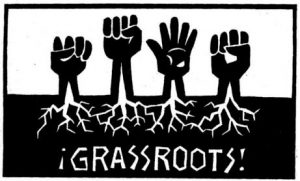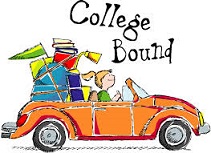Learning about Urban Education, Higher Education, and Grassroots Organizing
In this research process, I have learned a great deal about the long term and short term impact of mission statements, leadership perspectives, and level of involvement in grassroots organizing. Particularly for urban education to higher education, I learned about the importance of preparing students through a bottom-up approach and how my giving them agency, they can gain confidence, self-efficacy, and the network that their socioeconomically disadvantaged backgrounds initially limit. Before doing this research, I had a very general approach towards resolving issues in urban education and how to decrease the hurdles in accessing college. I was specifically frustrated circling most of my urban education discussions towards “a lack of resources”, often asking myself what it really means, which resources are lacking, and how there could be a network that connected the resources and organizations to those who needed it the most. After doing this research, I gained a better understanding of how grassroots organization provide this network to mobilize community leaders to address the issues I pondered about. This type of leadership is most pertinent to the issues that urban public schools face because of the nature of the dilemmas, which stem from a lack of resources and a cyclical culture resulting from areas of low socioeconomic backgrounds. To provide a more categorized scope, I organized my thoughts into three parts:
Grassroots Organizations
Learning more about grassroots organizing overall helped me understand a bottom-up approach that asked the communities and its members what they needed and gave them the agency and resources necessary to accomplish their goals. The problems that they face are stemmed from their community, and they members can transform from the victims into the movers if provided the opportunities too. In the case for urban education, grassroots organizations provide leadership opportunities and constant communication with their parents. Resources are not simply given to these public school students, they are invested them in the long term through workshops, counseling, and reflection. The organizers of this grassroots have to include people beyond the board members and the donors. Rather, they have to share agency and responsibilities with the individual student and expand beyond their families, communities, and reinvest the energy and resource into the very people affected by underfunded and overcrowded schools.
 The Student’s Journey
The Student’s Journey
In analyzing the grassroots organizations and reading the journals regarding access to higher ed, I’ve come to learn more about the students’ journey from urban public schools to college. Many of these students are normalized to an environment that does not provide enough, dearth of funding and resources, and have developed a mentality in response to it. Thus, they are generally lacking a sense of entitlement and the confidence their private school classmates would in college. Many of these structural and environmental issues are internalized and adapted by these inner city students, so when they arrive in college institutions, particularly private liberal arts schools, they are lacking in social and cultural capital surrounding education. As a result, students have to unpack years of these initial survival and coping mechanisms and also develop habits that help them survive in the academically competitive environments in college.
 Conclusion
Conclusion
The biggest takeaway from this project is a bigger scope in the perspective of issues, personal and structural, of urban education to higher education. In reading about the success stories of the various individuals that benefited from the grassroots organizations, I have to remind myself that these students are exceptional — exception to the larger social, cultural, and political systems that continue to disadvantage and limit students of color from lower socioeconomic backgrounds in the city. These students are mostly academically high achieving due to some factor at home or through their lucky opportunity to partake in a grassroots organization that believes and provides the necessary resources for them to thrive. These blessed opportunities, as helpful as they are for these students, are not open to everyone. Thus, urban public education continues to be disproportionately unequal. Until there is a large policy change that effects the various individuals access to public goods like education, the grassroots movement has to continue to mobilize and continue a cycle of positive change, all while expanding their reach and ensuring that every student has at least the opportunity to succeed.
